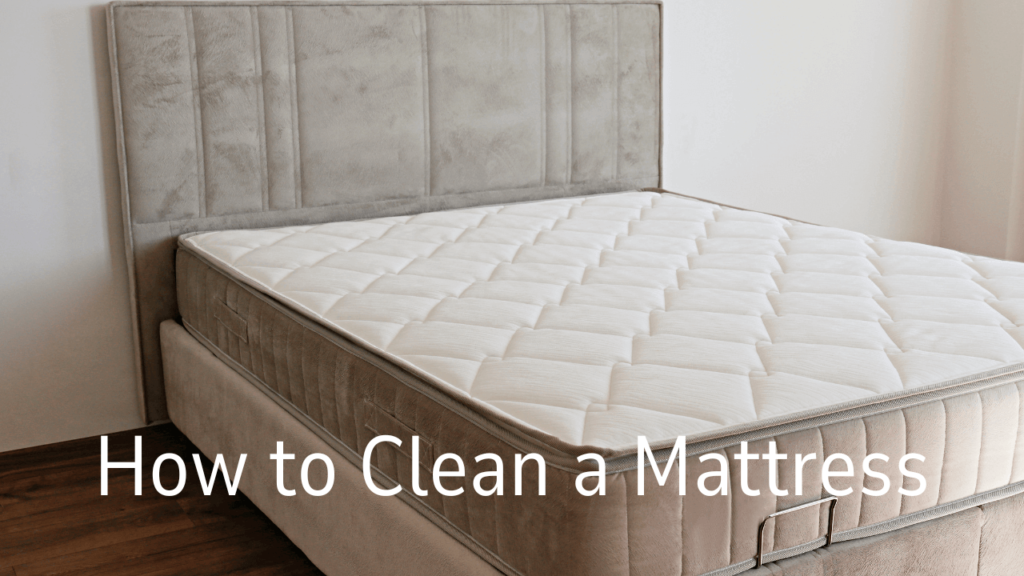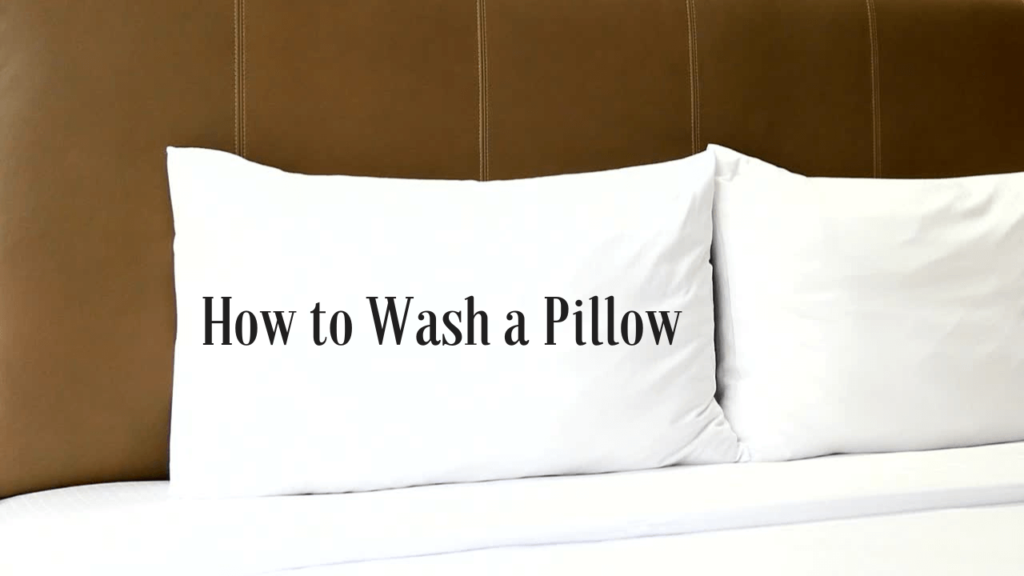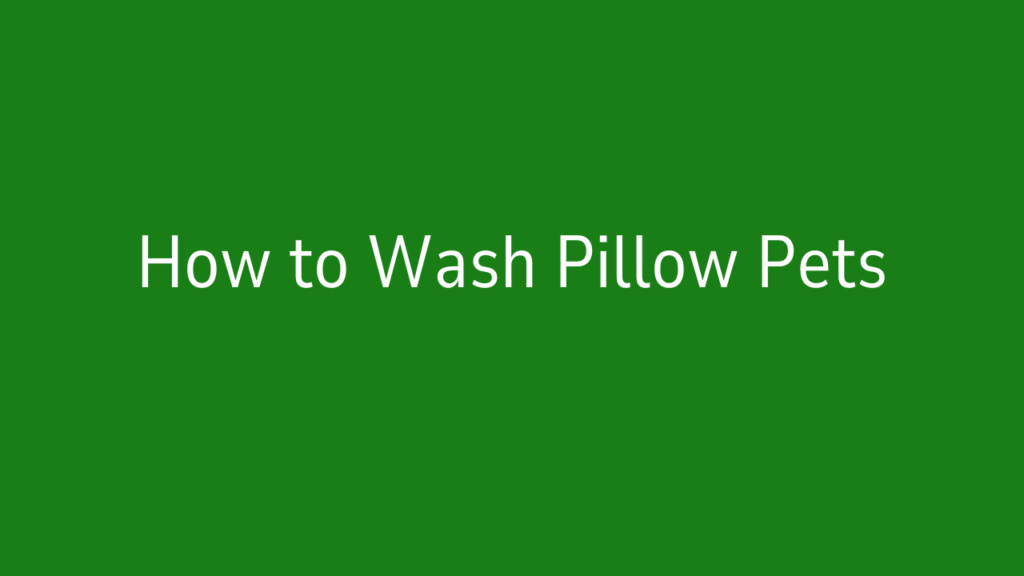Keeping your mattress clean is essential for better sleep and hygiene. Over time, mattresses accumulate dust, stains, sweat, and even allergens. Cleaning your mattress regularly can improve its lifespan and provide a healthier sleeping environment.
In this guide, we will explain step-by-step how to clean a mattress in Ireland, including practical tips and natural cleaning solutions tailored for the Irish climate.
Why Is Cleaning Your Mattress Important?
Before diving into the cleaning steps, here’s why you should make mattress cleaning a regular part of your household chores:
- Hygiene: Sweat, body oils, and spills can lead to unpleasant odors and bacterial growth.
- Allergy Prevention: Dust mites and allergens can cause respiratory issues or worsen allergies.
- Longevity: Regular cleaning extends your mattress’s life by preventing the buildup of dirt and stains.
- Better Sleep Quality: A clean mattress enhances comfort and promotes better sleep.
How Often Should You Change Your Mattress?
Replacing your mattress is essential for maintaining sleep quality, comfort, and hygiene. While the exact timing depends on factors like usage and material, here’s a general guide:
1. Typical Lifespan of a Mattress
- Innerspring Mattresses: 7-8 years.
- Memory Foam Mattresses: 8-10 years.
- Latex Mattresses: 10-12 years.
- Hybrid Mattresses: 7-10 years.
2. Signs It’s Time to Replace Your Mattress
- Sagging or Indentations: Uneven surfaces affect comfort and spinal alignment.
- Discomfort: Waking up with aches or poor sleep quality.
- Allergies: Increased dust mites, mold, or allergens in an old mattress.
- Noise: Springs creaking or other unusual sounds.
- Visible Damage: Tears, stains, or odors that cleaning cannot fix.
3. Factors That Affect Mattress Longevity
- Quality: Higher-quality mattresses last longer.
- Usage: Frequent use (e.g., in a main bedroom) shortens lifespan.
- Care: Proper cleaning and the use of a mattress protector can extend its life.
4. Tips to Prolong Your Mattress’s Life
- Rotate or flip your mattress every 3-6 months.
- Use a mattress protector to guard against spills and allergens.
- Ensure proper support with a sturdy bed frame.
In general, it’s recommended to replace your mattress every 7-10 years. However, always assess its condition regularly, as your comfort and health should guide the decision.
How Often Should You Clean a Mattress?
The recommended frequency depends on factors such as usage and environmental conditions:
- Vacuuming: Every 1-2 weeks.
- Deep Cleaning: Every 3-6 months.
- Spot Cleaning: Immediately after spills or stains occur.
Items You’ll Need
Here’s a list of tools and materials you’ll need for mattress cleaning:
- Vacuum cleaner with an upholstery attachment.
- Baking soda.
- Mild detergent or dish soap.
- White vinegar.
- Spray bottle.
- Clean cloths or microfiber towels.
- Warm water.
- Mattress protector (optional but recommended).
Step-by-Step Guide to Cleaning a Mattress in Ireland
1. Strip the Bed
- Remove all bedding, including sheets, pillowcases, and mattress covers.
- Wash these items in a washing machine according to their care labels. Use a hot water cycle if possible to kill bacteria and dust mites.
2. Vacuum the Mattress
- Use a vacuum cleaner with an upholstery attachment.
- Focus on seams, edges, and crevices where dirt and dust accumulate.
- For best results, vacuum both sides of the mattress.
3. Deodorize with Baking Soda
- Sprinkle a generous layer of baking soda over the mattress surface.
- Let it sit for 30 minutes to several hours to absorb odors.
- Vacuum the baking soda thoroughly.
4. Spot Clean Stains
- Identify the type of stain (e.g., sweat, urine, blood).
- Use the appropriate cleaning solution:
| Stain Type | Cleaning Solution | Steps |
|---|---|---|
| Sweat Stains | Baking soda + water | Mix into a paste, apply, and let dry before vacuuming. |
| Urine Stains | White vinegar + water | Spray on the area, blot with a cloth, and sprinkle baking soda. |
| Blood Stains | Cold water + detergent | Dab gently, avoid scrubbing to prevent spreading. |
- Always blot stains; do not rub.
5. Remove Allergens
- For dust mites, steam cleaning is an effective solution. Use a handheld steam cleaner if available.
- Alternatively, consider allergen sprays designed for mattresses.
6. Air the Mattress
- Open windows to allow fresh air circulation.
- If weather permits, place the mattress in a sunny spot outdoors for natural deodorizing.
7. Flip and Rotate the Mattress
- Flip and rotate your mattress every 3-6 months to prevent sagging and even out wear.
Natural Cleaning Solutions for Irish Households
Using natural cleaning solutions is an eco-friendly and cost-effective way to maintain a clean home. Here are some versatile options popular in Irish households:
- Baking Soda
- Purpose: Deodorizes, removes stains, and cleans surfaces.
- Usage: Sprinkle on carpets, mattresses, or mix with water for a cleaning paste.
- White Vinegar
- Purpose: Disinfects, cuts grease, and removes odors.
- Usage: Mix equal parts vinegar and water in a spray bottle for all-purpose cleaning.
- Lemon Juice
- Purpose: Natural bleaching agent and stain remover.
- Usage: Mix with baking soda to clean sinks, taps, and cutting boards.
- Essential Oils
- Purpose: Adds fragrance and disinfecting properties.
- Usage: Add a few drops of lavender, tea tree, or eucalyptus oil to cleaning solutions.
- Salt
- Purpose: Abrasive cleaner for tough stains.
- Usage: Combine with vinegar for scrubbing pots, pans, or rust spots.
- Castile Soap
- Purpose: Gentle yet effective cleaner for various surfaces.
- Usage: Mix with water to clean floors, tiles, or as dish soap.
- Hydrogen Peroxide
- Purpose: Disinfects and whitens.
- Usage: Use diluted for cleaning grout or removing blood stains.
- Cornstarch
- Purpose: Absorbs grease and freshens fabrics.
- Usage: Sprinkle on upholstery or carpets, let sit, and vacuum.
By incorporating these natural solutions, you can keep your home clean while protecting the environment and reducing chemical exposure.
Preventing Mattress Stains and Dirt
- Use a Mattress Protector: Waterproof protectors shield against spills and stains.
- Wash Bedding Regularly: Change and wash bedding at least once a week.
- Avoid Eating or Drinking in Bed: Minimize the risk of spills.
How to Remove Stains from Mattresses
Removing stains from mattresses requires quick action and the right cleaning method. Here’s how to tackle common types of stains:
- Sweat Stains
- Mix baking soda and water into a paste.
- Apply to the stain and let it dry.
- Vacuum the residue.
- Urine Stains
- Blot the area with a clean cloth to absorb moisture.
- Mix equal parts white vinegar and water in a spray bottle.
- Spray on the stain, blot, and sprinkle baking soda. Let it dry, then vacuum.
- Blood Stains
- Use cold water and a few drops of dish soap.
- Dab the stain gently with a cloth (do not rub).
- Repeat until the stain lifts.
- Food or Drink Stains
- Mix mild detergent with warm water.
- Blot the stain with the solution and a cloth.
- Rinse with a damp cloth and let dry.
- Oil or Grease Stains
- Sprinkle cornstarch or baking soda on the stain.
- Let it sit for 20 minutes to absorb the grease.
- Vacuum thoroughly.
Always blot stains rather than rubbing to avoid spreading. Let the mattress air dry completely before use.
How to Clean Urine from a Mattress (Including Dry Urine Stains)
Cleaning urine from a mattress, whether fresh or dry, requires proper techniques to eliminate stains and odors effectively. Here’s a step-by-step guide for both scenarios:
How to Remove Fresh Urine from a Mattress
- Act Quickly
- Use a clean cloth or paper towels to blot (not rub) the area to absorb as much liquid as possible.
- Prepare a Cleaning Solution
- Mix equal parts white vinegar and water in a spray bottle, or use an enzyme-based cleaner designed for urine.
- Apply the Solution
- Spray the solution generously over the affected area.
- Let it sit for 10-15 minutes to break down the urine.
- Blot and Deodorize
- Blot with a clean cloth to remove moisture.
- Sprinkle baking soda over the area to absorb remaining odors.
- Vacuum and Air Dry
- Vacuum the dried baking soda thoroughly.
- Allow the mattress to air dry completely before reassembling your bed.
How to Get Urine Out of a Mattress When Dry
Dry urine stains can be more challenging, but they’re not impossible to remove. Here’s how:
- Rehydrate the Stain
- Lightly spray the area with a solution of white vinegar and water to rehydrate the dried urine.
- Let it sit for 5-10 minutes to loosen the stain.
- Blot and Apply Baking Soda
- Blot the rehydrated area with a cloth to lift the loosened urine.
- Sprinkle baking soda over the area to absorb moisture and odors.
- Use Hydrogen Peroxide Solution (Optional)
- For tough stains, mix 1 cup of hydrogen peroxide, 3 tablespoons of baking soda, and a few drops of dish soap.
- Apply to the stain, let it sit for 10-15 minutes, and then blot with a clean cloth.
- Vacuum and Repeat if Needed
- Vacuum the dried baking soda thoroughly.
- Repeat the process for stubborn stains.
Additional Tips
- Prevent Future Stains: Use a waterproof mattress protector to avoid direct contact with liquids.
- Avoid Scrubbing: Scrubbing can push the urine deeper into the mattress fibers.
- Odor Control: Enzyme-based cleaners are especially effective for breaking down the compounds in urine.
By acting promptly and using the right cleaning methods, you can successfully remove both fresh and dried urine from a mattress, restoring its cleanliness and comfort.
How to Clean a Mattress Protector
A clean mattress protector is essential for maintaining a fresh and healthy sleeping environment. Over time, it can accumulate dust, sweat, and stains, so regular cleaning is crucial. Here’s a broad guide to cleaning your mattress protector:
1. Check Care Instructions
- Always start by reading the manufacturer’s care label. This provides specific guidelines to ensure you don’t damage the fabric or waterproof layers.
2. Pre-Treat Stains
- Inspect your mattress protector for stains before washing.
- Apply a gentle stain remover, or use a natural solution like baking soda mixed with water to target stains.
- Let the solution sit for 10-15 minutes to break down the stain.
3. Washing Tips
- Machine Wash: Use cold or warm water with a mild detergent on a gentle cycle to protect the fabric.
- Hand Wash (if required): Submerge in water with detergent, gently agitating it to remove dirt.
4. Drying Properly
- Air Drying: Hang the protector in a well-ventilated area to prevent shrinking or damage.
- Tumble Drying: If the label allows, use a low-heat setting to safely dry the protector.
5. Frequency of Cleaning
- Wash your mattress protector every 1-2 months, or more frequently if you experience allergies or spills.
6. Extra Care for Waterproof Protectors
- Avoid bleach and fabric softeners, as these can harm the waterproof membrane.
- Ensure it is thoroughly dry before putting it back on the mattress to prevent mold or mildew.
By cleaning your mattress protector regularly, you can extend its lifespan and maintain a clean, comfortable bed for years to come.
How to Clean Pee from a Mattress
Cleaning pee from a mattress is essential to remove stains, odors, and prevent long-term damage. Here’s a step-by-step guide to tackle both fresh and dried stains effectively:
1. Remove Fresh Pee
- Blot the Area Immediately
- Use paper towels or a clean cloth to absorb as much liquid as possible.
- Avoid rubbing, as this can spread the pee further into the mattress.
- Apply a Cleaning Solution
- Mix equal parts white vinegar and water in a spray bottle.
- Spray the solution generously over the affected area.
- Neutralize Odors with Baking Soda
- Sprinkle a thick layer of baking soda on the damp area.
- Let it sit for several hours (preferably overnight) to absorb moisture and odors.
- Vacuum Thoroughly
- Use a vacuum with an upholstery attachment to remove the dried baking soda.
- Ensure no residue is left behind.
- Air Dry the Mattress
- Allow the mattress to dry completely before putting bedding back on. Use a fan or open windows for faster drying.
2. Remove Dried Pee from a Mattress
- Rehydrate the Stain
- Lightly spray the dried pee stain with a solution of vinegar and water to loosen it.
- Blot and Deodorize
- Blot with a cloth to remove as much liquid as possible.
- Sprinkle baking soda over the area and let it sit for a few hours.
- Use Hydrogen Peroxide Solution (Optional)
- Mix 1 cup of hydrogen peroxide, 3 tablespoons of baking soda, and a few drops of dish soap.
- Apply to the stain, let it sit for 15 minutes, then blot with a clean cloth.
- Vacuum and Repeat
- Vacuum the area to remove dried residue. Repeat the process if the stain or odor persists.
3. Prevent Future Stains
- Use a waterproof mattress protector to guard against spills and accidents.
- Clean any spills or stains immediately to prevent them from setting.
By following these steps, you can effectively clean pee from your mattress, ensuring it remains fresh, hygienic, and odor-free.
Can You Put a Mattress in a Skip in Ireland?
Disposing of a mattress can be challenging due to its size and the materials it contains. In Ireland, you might wonder whether you can simply place it in a skip. Here’s what you need to know:
1. General Rules for Skips in Ireland
- Skips are designed for various types of waste, including general household items, garden waste, and construction debris.
- However, certain items are prohibited in skips, and mattresses often fall into this category due to their bulky nature and recycling requirements.
2. Can Mattresses Go in a Skip?
- Not Always Allowed: Most skip hire companies in Ireland do not allow mattresses to be placed in a skip without prior arrangement.
- Extra Charges: If allowed, there may be an additional fee (e.g., €20-€40) because mattresses require specialized recycling processes.
3. Alternative Ways to Dispose of a Mattress in Ireland
If you cannot put your mattress in a skip, consider these options:
- Bring to a Recycling Centre:
- Many local civic amenity sites or recycling centres accept mattresses for a small fee.
- Check your local council’s website for specific guidelines.
- Bulky Waste Collection:
- Some local authorities offer bulky waste collection services for large items like mattresses.
- These services may be scheduled or require booking.
- Retailer Take-Back Scheme:
- If you’re buying a new mattress, some retailers offer a take-back service for your old one.
- This is often included in the delivery fee or available for a small additional cost.
- Donate (If in Good Condition):
- Charities or furniture reuse networks like the Irish Charity Shops Association may accept clean, undamaged mattresses.
- Specialized Mattress Disposal Companies:
- Some companies in Ireland specialize in mattress disposal and recycling, ensuring environmentally friendly processing.
4. Why Mattresses Require Special Disposal
- Size and Materials: Mattresses are bulky and made of materials like foam, metal springs, and fabric, which need to be separated for proper recycling.
- Environmental Impact: Dumping a mattress inappropriately can harm the environment, as they take years to decompose in landfills.
5. Summary
- Can You Put It in a Skip? Generally no, unless allowed by the skip hire company for an extra fee.
- Best Options: Use recycling centres, bulky waste collections, or specialized services for proper disposal.
By following the proper disposal methods, you can ensure your old mattress is handled responsibly and in compliance with Ireland’s waste regulations.
Professional Mattress Cleaning Services in Ireland
If deep cleaning feels overwhelming, consider hiring professional services. Many Irish cleaning companies offer mattress-specific services, including steam cleaning and allergen removal.
| Service Provider | Location | Average Cost |
|---|---|---|
| XYZ Cleaning Services | Dublin | €50-€100 |
| Green Mattress Cleaners | Cork | €60-€120 |
| EcoSteam Cleaning Experts | Nationwide | €70-€150 |
FAQs About Mattress Cleaning
1. Can I clean my mattress with just baking soda?
Yes, baking soda is excellent for deodorizing and mild cleaning, but stubborn stains may require additional solutions.
2. How long does it take to clean a mattress?
Basic cleaning can take 1-2 hours, excluding drying time.
3. Can I use a carpet cleaner on my mattress?
No, carpet cleaners are not designed for mattresses and may leave excess moisture.
Conclusion
Cleaning your mattress doesn’t have to be complicated. By following these steps and incorporating regular maintenance, you can ensure a healthier, more comfortable sleep environment. Whether you do it yourself or hire professionals, keeping your mattress fresh is worth the effort.
Stay consistent, and don’t forget to use protective measures to reduce cleaning frequency. With these tips, your mattress will remain clean and cozy for years to come!

Hi, I’m Tanvir, the founder and author of Explore Ireland Now. With a deep love for Ireland and its rich culture, history, and landscapes, I created this site to share everything that makes this beautiful country worth exploring. Whether you’re a local looking for hidden gems or a traveler planning your next adventure, I provide insightful guides, tips, and recommendations to help you experience Ireland to the fullest.
From stunning landscapes to vibrant cities and quaint villages, Ireland is full of wonders waiting to be discovered. Through my personal experiences and research, I aim to bring you the most up-to-date information and inspiration for your journey.
Thank you for visiting Explore Ireland Now—I hope my content helps you uncover all that this incredible country has to offer! If you have any questions or need travel advice, feel free to reach out.



